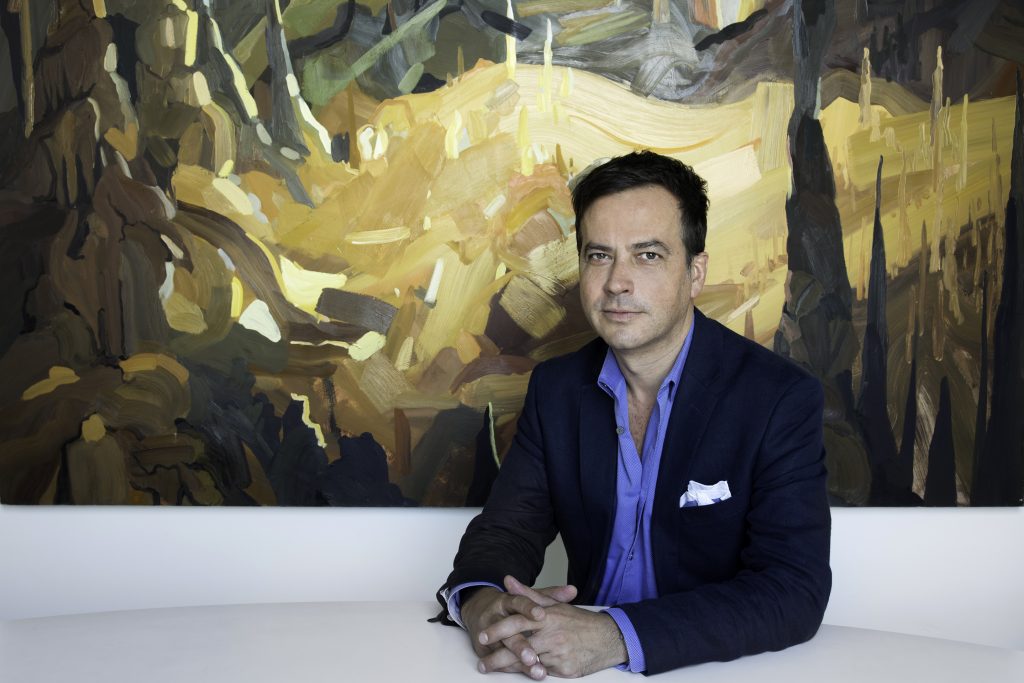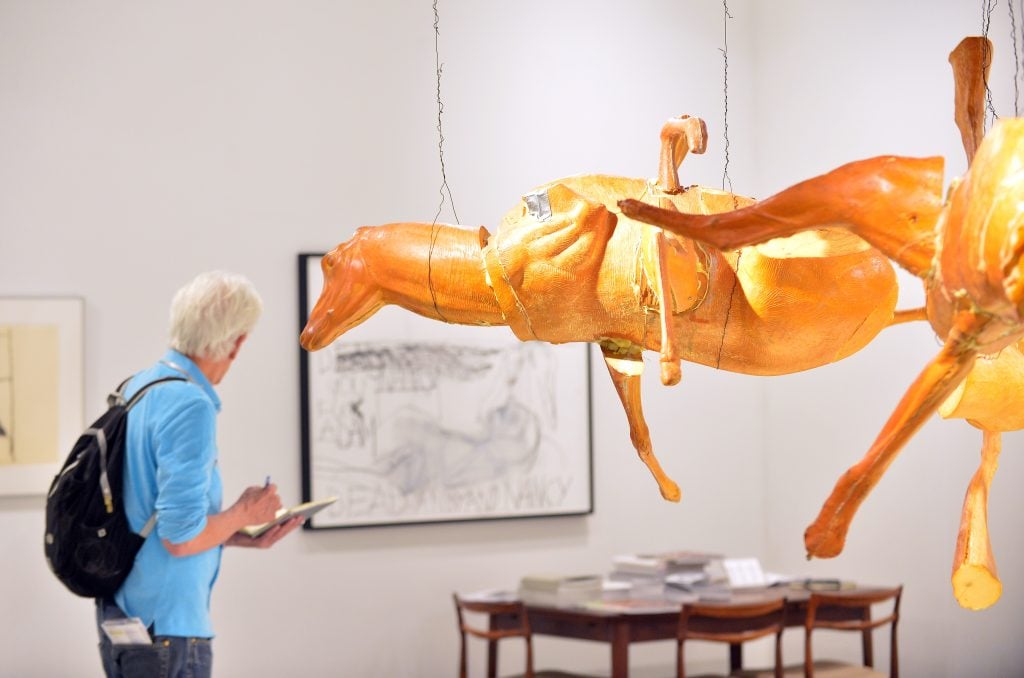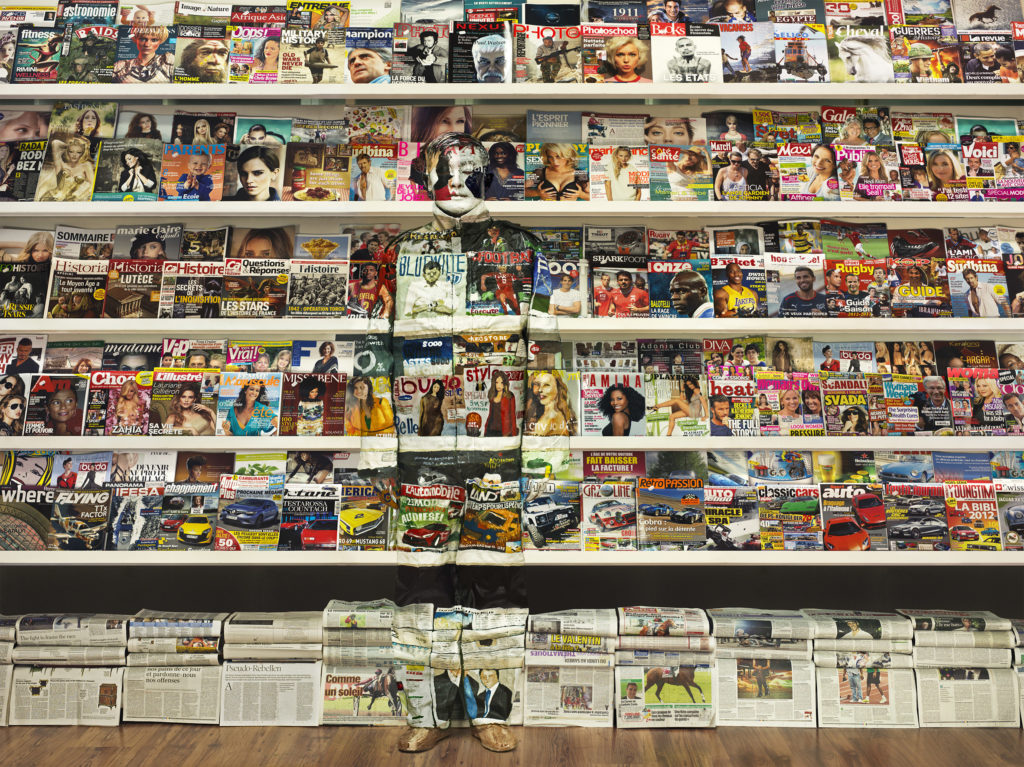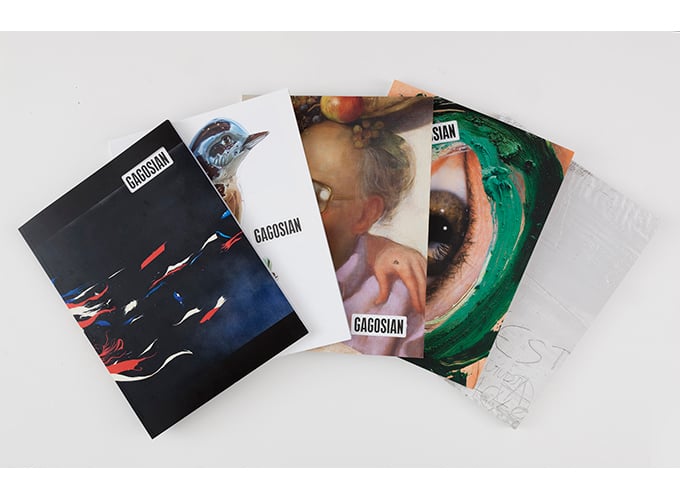Opinion
We All Want a Healthy Art Industry. Don’t Forget the Role of Independent Art Media in Keeping It That Way
The founder of the art PR firm Blue Medium assesses the challenges facing the art-media landscape—and how to weather them.

The founder of the art PR firm Blue Medium assesses the challenges facing the art-media landscape—and how to weather them.

John Melick

It’s clear that the art world will be drastically altered by this year of upheaval. But in addition to great loss, this disruption may also result in some welcome changes. Many of us hope for new paradigms and approaches on the other side: more inclusion, innovation, collegiality, and fair-mindedness, for starters. What exactly our new environment will look like depends on each of us stepping up now and defending what matters.
For my part—and from a self-serving perspective at the helm of a New York art and design PR firm—I am feeling a new urgency to roll back the retrenchment of the independent art media sector, before its march toward extinction is accelerated by current business instability.
In recent years, I have read too many analyses of media malaise in the art world and beyond, offering a diagnosis of numerous contributing causes. But this moment demands we face the obvious: Art and culture media need advertising dollars and more paid content partnerships to survive, even while many of us are encumbered by seemingly more important overheads and obligations.
Whether as consumers or subjects of the news, we all depend on unbiased journalists to keep us accountable, to report on trends bigger than individual operations, and to provide critical insights on art as well as the myriad people who facilitate it and profit from it. No one wants to imagine an industry with no impartial market analysis, no profiles of emerging leaders, no new ideas, no listings of the great IRL and virtual talks and events, no reviews to argue over—not to mention coverage of how major world events, from the pandemic to the current protests against police brutality and systemic racism, are impacting our institutions and the audiences they serve.

A veteran art-market journalist at Art Basel Miami Beach 2017. (Photo by Johnny Louis/WireImage)
Yet over the years, as advertising budgets have been redirected to social-media campaigns and private publishing ventures, the art world has been edging ever closer to a reality in which few if any independent voices are left to tell our stories. This is true for many industries, but none so pronounced as ours, which leans heavily on critical discourse and informed opinion to activate audiences and grease the wheels of business.
It’s more than just the arts media mainstays to be concerned about. In Miami Beach last December, well before scientists told us about COVID-19, I was struck by the conspicuous absence of many of our freelance media colleagues at one of the art world’s networking polestars—even though Art Basel and its satellite stalwarts were still flourishing. I missed many among that awesome if slightly irascible band of reporters who cover what our gallery clients present, what collectors buy, and what curators are saying on and off the record.
While some might be happier to see less art-fair coverage and fewer hangers-on, members of this freelance mob are often the ones cutting their teeth by reporting on smaller projects, artists, and events, revealing the under-recognized and underfunded endeavors we’d otherwise never hear about above the din of champagne glasses. These people write for smaller outlets, infuse art and aesthetics into all kinds of lifestyle and street-smart rags and blogs, and may be lucky to make $50 for some of their efforts—but they persist.
It’s been fashionable to complain about the plight of the freelance writer, but less in vogue to pony up the advertising dollars needed to fund their assignments—and their airfares to Miami or wherever else we might congregate in the future.
The bigger media guns aren’t unaffected. Before enthralling us with their art criticism in the New Yorker and the New York Times, Peter Schjeldahl and Roberta Smith respectively paid their dues for decades at the kind of publications that in recent years have slashed art coverage, if not folding altogether. Will there be anywhere left for the next generation to learn the ropes?

Liu Bolin, Hiding in the City – Switzerland Magazine Rack (2012). Courtesy the artist.
Those MIA writers were just the most recent symptom of a long, slow decline following the layoff of virtually all critics at regional newspapers, reductions in frequency at national art titles, and more. In a recent Pew Charitable Trust report, Elizabeth Grieco found that 23 percent of newsroom jobs were cut in the United States between 2008 and 2019. I personally know several regional art critics who’ve lost their full-time jobs since I entered the PR game and noticed that most art outlets have reduced their full-time staff over the past two years.
Moreover, as advertising revenues have fallen, so have salaries. According to a 2019 survey of the arts journalism field, Mary Louise Schumacher (former art critic for the Milwaukee Journal Sentinel) found that 60 percent of writers in the field make half of their total earnings or less from arts writing and fewer than half of those surveyed make more than $20,000 per year. It makes you wonder not only what kind of arts journalism is sustainable, but who can even afford to enter the field today.
Notably, even as the variety of legitimate media outlets has waned since I founded Blue Medium in 2000, I have seen the number of art and culture PR agencies (all with similar offerings) multiply fivefold. There’s something out of balance in that equation. One result of that discrepancy is that many of us are diversifying our practices with digital content creation. For instance, in 2017, my firm established a digital division Bower Blue to help clients create fresh content about their exhibitions, studios, artists, and events to post on their digital platforms. In some cases, we hire freelance writers to conduct interviews and write reports, but I respect that this often isn’t their preferred way to make a buck.
This content creation is part of the social/digital evolution and to ignore the new reality would be foolhardy. But don’t confuse this form of controlled storytelling and self-publishing with authentic, independent journalism that covers everything from a scrappy new gallery initiative in Detroit to a blockbuster museum show in London. And for the authentic arts media outlets that do exist, the constant need to produce more content with shrinking budgets is eroding their ability to do deeper dives into urgent subjects and to communicate the richness and diversity of what’s happening in the art world beyond provocative headlines about Banksy, KAWS, and Koons.
With that in mind, I would offer the same advice that I offer all my clients to a new institution or languid foundation looking to get noticed or a gargantuan gallery trying to bolster or rescue its reputation: Don’t skimp on or cut all your advertising, or at least forge a small media partnership if you want to be seen and heard. If you can afford it, do it for your brand (yes, the art world has brands), your community at large, and those who have dedicated their careers to covering what you and your colleagues do. While the fate of arts reporters at regional newspapers might be settled, the dedicated arts media is small enough for our industry to make a meaningful impact by staying engaged with its publishers.

Gagosian Quarterly. From left to right: spring 2018 through spring 2017 issues. Courtesy Gagosian
Despite the contraction in the field, there are probably more options to support media than ever before, as most outlets have branched out in ways similar to PR firms. In addition to their print and digital ads, wraps, inserts, podcasts, and videos, the art and culture media offer digital paid and promoted posts, targeted newsletter campaigns, or, if you want to get creative, work directly with them on native advertising or a new content series. This applies to both for-profit and nonprofit media outlets, the latter offering some tax deductions to boot. They have a built-in reach and valuable reputations to leverage.
Please keep self-publishing your glossy magazines, continue with your beautifully lit videos, well-scripted podcasts, and special events, both virtual, and soon perhaps, in person (miss you!). But don’t forget our media outlets and how vital they are to the very existence of the art ecosystem, along with their value in a more universal, democratic sense. We need to know what’s happening in the art world beyond our social-media echo chambers. Spending your money on reputable outlets will never guarantee you the sort of coverage you want, but it is the only way to guarantee us the kind of journalism we all need.
Decades of trend lines won’t be reversed in the months ahead, but we must attempt not to let short-term pressures exacerbate long-term problems. If we wait until we feel safe to create the art world we want, it may be too late, and not just for the media.
John Melick is the founder of the PR firm Blue Medium (2000) and the digital content agency Bower Blue (2017).